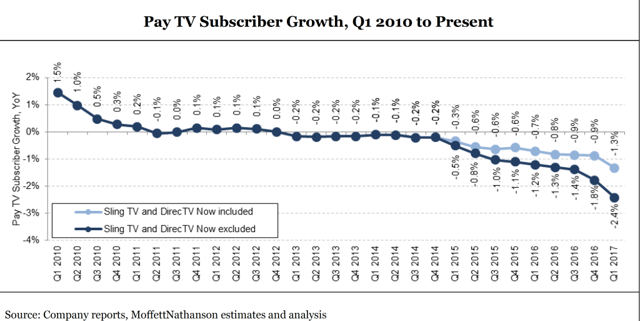I find some of those statistics wrong, taken out of context, and cherry-picked to support cable TV which is rapidly faltering. Michael Mulvihill is a Fox Sports programming researcher (I think, correct me if wrong), with probably an interest in live cable TV.
I’ve also done a lot of surveys and there are all kinds of issues, and even ‘experts’ really don’t know how to deal with the issues there are e.g. intercept vs telephone vs online, stated preference vs revealed, expansion methods and control totals, query grouping - I’m just getting started. Just because it’s Nielsen doesn’t mean the finer statistics are reliable.
He also makes his own interpretation rather than points out actual statistics from the report. The average adult watches 13 hours of streaming video on demand a month? Yeah that’s low. Wait a minute, no it’s not. 250 million American adults x 13 hours… is crazy lots. Plus only 50% of homes are SVOD subscribers, plus a lot of the younger generation watch streaming without being subscribers. 20% of SVOD is original content, that’s low he points out. Wait, actually it’s not. What percent of all programming is VOD original content? 0.5%?, so that 20% is actually insanely high.
Personally I don’t believe the 89.5% statistic either, and I can’t find it on the Nielsen site. The published report available online is dated March 2016 and refers to surveys in summer 2015… actually things have changed quite a bit in the last 2 years. Here’s just one source I found:

Here are a few current quotes a quick search turns up:
AT&T’s Cable Business Continues to Be Savaged by Cordcutting
and,
This year, there will be 22.2 million cord-cutters ages 18 and older, a figure up 33.2% over 2016. The overall tally is much higher than the 15.4 million eMarketer previously predicted. Meanwhile, the number of US adult cord-nevers will grow 5.8% this year to 34.4 million.
When I cut my cable, they begged me to stay. Honestly anyone on here paying anything more than $60 a month, regardless of 6,000 channels or whatever, is paying way too much. Then when I told them “I’ haven’t watched 30 seconds of TV in the past six months”, it was funny. The girl who had been probing me basically stopped and said “oh you’re like everyone else, I’ll stop bothering you” and she proceeded with the cancel.
Thing is among the over-60 crowd, there are tens of millions of elderly people addicted to live news, live sports, and their favorite sitcoms. The fact that it’s still a huge market is ultimately not very meaningful in the light of these short, medium, and long-term trends.
